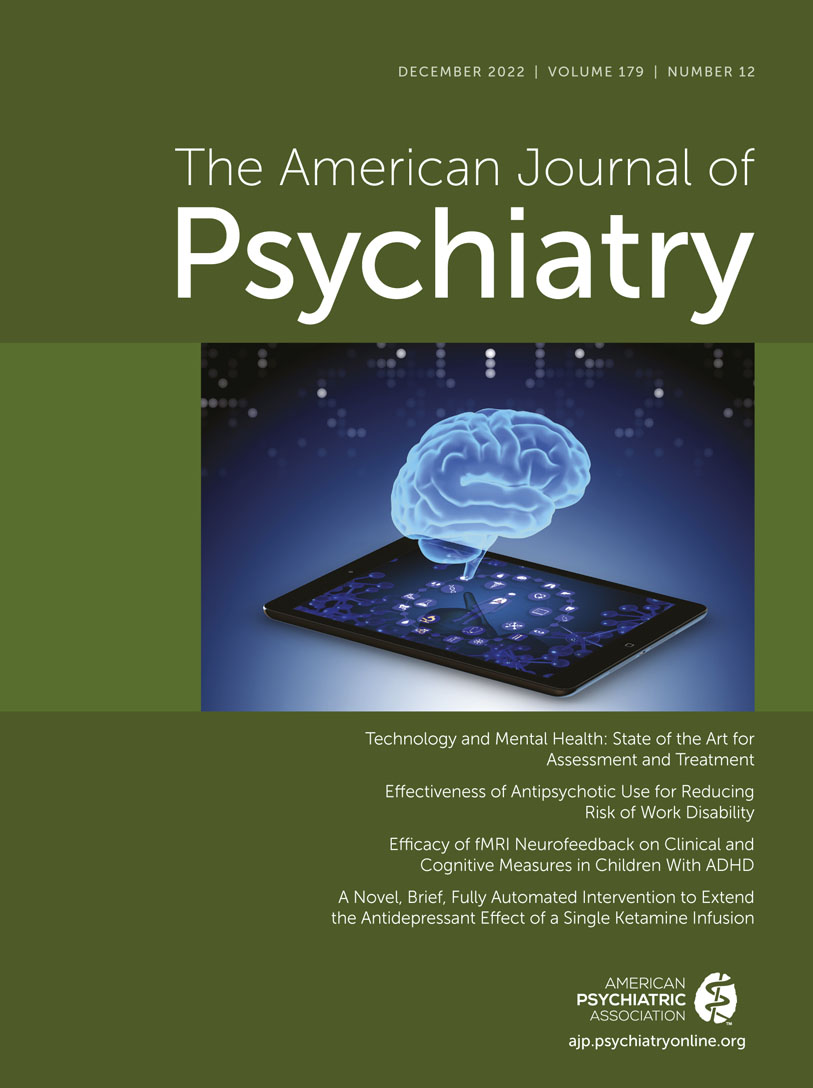Highlights From the Residents’ Journal: September 2022
The AJP Residents’ Journal is a quarterly e-publication that serves as a forum for resident physicians and fellows to share ideas and experiences in training, clinical practice, research, and careers.
The Role of Gender Dysphoria in the Development of an Eating Disorder
Emma Banasiak, B.S.
Gender dysphoria is a disorder characterized by distress associated with identifying as a gender that differs from one’s sex assigned at birth. This distress leads to a higher risk of body image dissatisfaction, which in turn can lead to an increased risk of disordered eating behaviors. According to one study, transgender college students were over four times as likely as cisgender heterosexual female college students to be diagnosed as having an eating disorder. Some factors commonly seen in the development of eating disorders are a fear of gaining weight, a disturbed perception of one’s own body image, and cultural value placed on thinness as the body ideal. These factors tend to affect woman more than men, as reflected in the 10-to-1 female-to-male ratio of disease prevalence across both anorexia nervosa and bulimia nervosa. Less is known about how these factors affect the development of disordered eating behaviors (DEB) among gender minorities—that is, individuals whose gender identities are discordant with their sex assigned at birth. The purpose of this case report is to explore the ways in which the psychopathology underlying DEB and eating disorders can differ between transgender and cisgender individuals.
Antiracism in Mixed Spaces
Laika R. Simeon-Thompson, M.D., Maia L. Ou, M.D.
Antiracism is an ideology and way of life that involves dismantling “policies that produce or sustain racial inequity.” In psychiatry, this includes challenging explicit and implicit racism, promoting inclusivity within leadership, and interrogating racial disparities in diagnoses. Although some may see racism as binary, antiracism is a journey. Some sit in their homes, unaware of race. Some stand in their walkways, ready to retreat inside. Some have walked a thousand miles. Racial equity requires collaboration with allies at different stages. To describe those at intermediate stages, we propose the novel terms “walkwayers” (those early in their antiracism journey and less aware of the effects of systemic racism) and “partwayers” (those engaged in some antiracist activities and aware of systemic racism but who still have significant blind spots). Performing antiracist work in mixed spaces, which contain walkwayers and partwayers, creates a variety of challenges for us as Black, Indigenous, and people of color (BIPOC) individuals.
“Gay Is Good”: History of Homosexuality in the DSM and Modern Psychiatry
Sara E. McHenry, M.D., M.B.A.
In the first edition of the Diagnostic and Statistical Manual of Mental Disorders (DSM), published in 1952, homosexuality was classified under “sociopathic personality disturbance.” The last 70 years have brought psychiatry a long way, but it is only in the most recent version of the DSM that the last pieces of evidence of pathologizing homosexuality were removed. Sixty years of work by gay rights activists, psychiatrists, psychologists, and leaders in the mental health community have shaped our current views about individuals from sexual minority communities and the care that they receive. This article examines the progression of classification of homosexuality in various editions of the DSM, factors influencing this progression, and implications for sexual and other minority communities.
ALSO IN THIS ISSUE
Moving Forward and Supporting Each Other
Danielle W. Lowe, M.D., Ph.D.
Special Section: Minority Mental Health and Diversity
Fiona D. Fonseca, M.B., B.Ch., B.A.O., M.S.
It’s On Us: (Re)gaining the Trust of Transgender Patients
Allegra Condiotte, M.D., M.H.A.
Coping With a Coronavirus-Related Stillbirth
Marlee Madora, M.D.
Bipolar Disorder in Patients With Tuberous Sclerosis Complex: Causation or Correlation?
Haseeb A. Akuly, D.O., Andrea Boyer, M.D., Alex Percle, B.S., Benjamin Talley, M.S., Hamza Mohammad-Amin, M.D.
Seeing Through the Eyes of Another: A Brief Review of the 2020 Film “The Father”
Johnathan Wu, M.D.



